By Emiko Atherton and Tyler Norris
The post-World War II era offered hope for many middle-class families with its promise of upward mobility. Unfortunately, the emphasis on suburban home-ownership and the white picket fence has severely impacted how we get from place to place.
And, as a result, our national well-being.
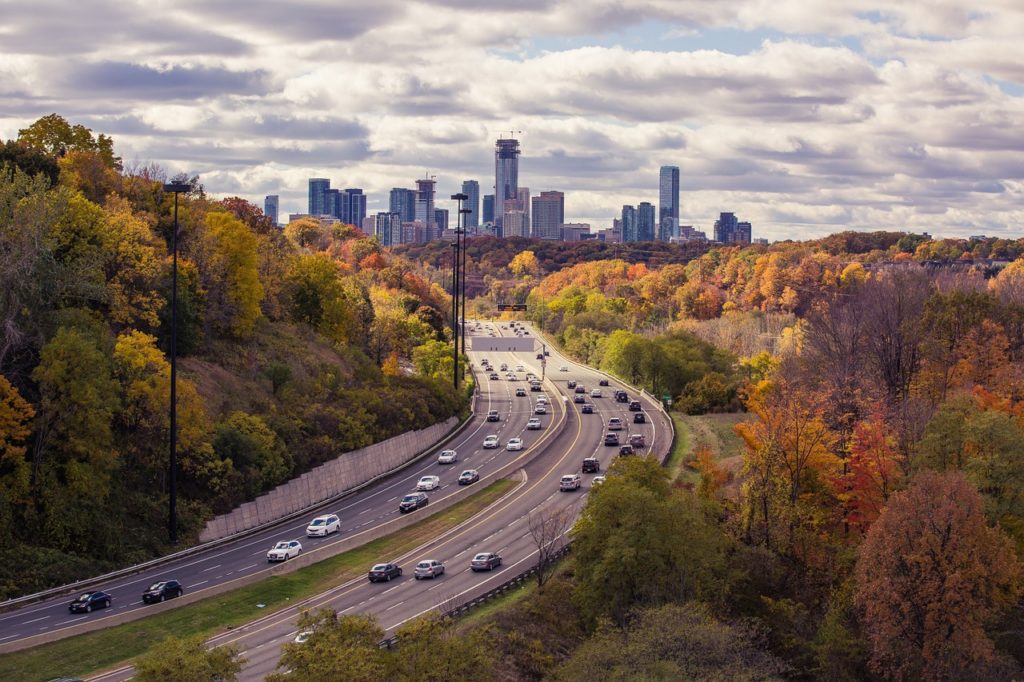 The intentional pattern of land development that evolved resulted in sprawl in the suburbs and disinvestment in communities of color, leaving all communities with fewer transportation choices. This gave rise to multiple harmful legacies, as people were required to drive to access basic destinations, such as their jobs, schools, or places of worship. The legacies of these decisions are felt today, through impacts such as:
The intentional pattern of land development that evolved resulted in sprawl in the suburbs and disinvestment in communities of color, leaving all communities with fewer transportation choices. This gave rise to multiple harmful legacies, as people were required to drive to access basic destinations, such as their jobs, schools, or places of worship. The legacies of these decisions are felt today, through impacts such as:
- Road traffic. Long commutes have been associated with stress, respiratory problems, lead poisoning, and other health effects.
- Auto injuries and fatalities. About 5,000 people are killed by cars while walking each year, even though traffic fatalities overall are going down.
- Pollution. A quarter of a million premature deaths are attributed to ground level ozone and fine particulate matter.
- Declining physical activity. Cities with more sprawl have been correlated with poorer health compared to more compact ones.
- Underinvestment in public transportation. Forty-five percent of Americans, and 86 percent of rural Americans, have no access to public transportation.
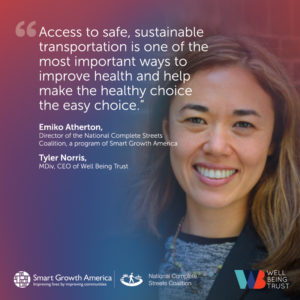 And, these consequences have been unequally distributed in communities across the country, often disproportionately harming the already disadvantaged, such as low-income communities and communities of color.
And, these consequences have been unequally distributed in communities across the country, often disproportionately harming the already disadvantaged, such as low-income communities and communities of color.
While this is the reality in some places, other places around the country have shed this legacy and forged a new, inclusive one, that focuses on transportation systems that improve, rather than inhibit, health and well-being.
Now is the time to bring transportation, health, and well-being solutions to scale and make reliable transportation — an indispensable vital condition that we all depend on— available to everyone. This includes: bike lanes and safe, walkable streets; reliable and energy- and cost-efficient public transit offerings; and innovative transportation infrastructure to promise a safer, more economically sound future for all.
The best news of all? Plenty of cities across the country are already making strides to turn this vision into a reality for their residents—the models are out there for community leaders and activists to learn from and modify for their own neighborhoods and cities. And here’s how:
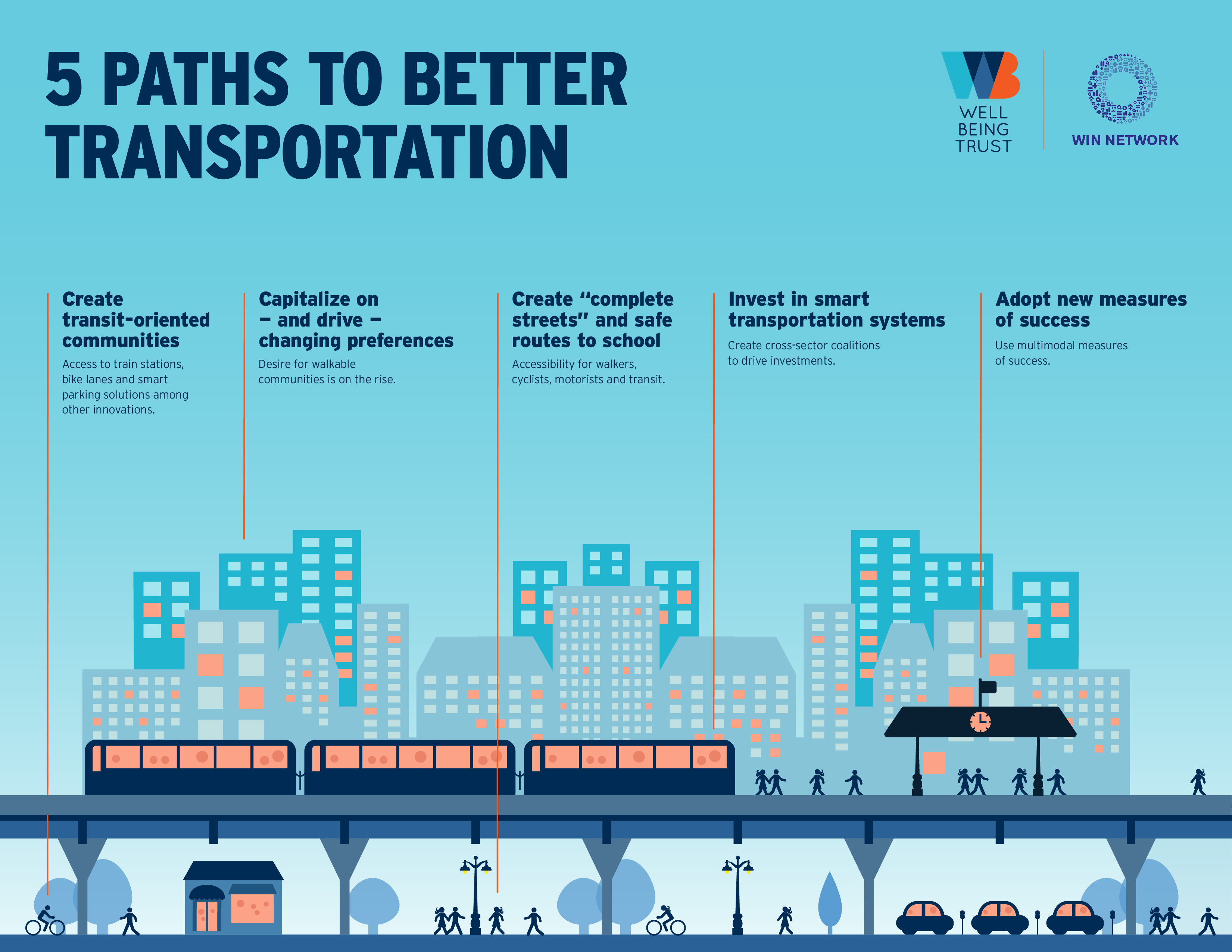
Create transit-oriented communities
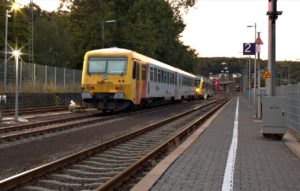 In Atlanta, mixed-use housing developments are going up across from train stations, providing locals with greater commercial and residential options near transit centers. Seattle, which was named the best biking city in America in 2019 for its exceptional protected bike lanes, is building light rail stations in lower-income neighborhoods. It’s also capping parking supplies for developments around the city to discourage car ownership and make way for public transit development.
In Atlanta, mixed-use housing developments are going up across from train stations, providing locals with greater commercial and residential options near transit centers. Seattle, which was named the best biking city in America in 2019 for its exceptional protected bike lanes, is building light rail stations in lower-income neighborhoods. It’s also capping parking supplies for developments around the city to discourage car ownership and make way for public transit development.
Capitalize on — and drive — changing preferences
More and more people want to live in walkable, transit-served communities. Meeting that demand will also boost well-being in communities.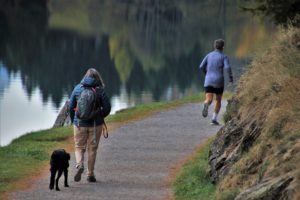
At the same time, creating communities with more active transit options makes it easier for people to use them — and that can change preferences. Allen County, Kansas, for example, built trails to connect the community and encourage physical activity. Neighbors thought the trails would go unused, but once they were built, people started using them and embraced a more active lifestyle.
Create “complete streets” and safe routes to school
In a community with “complete streets,” roadways are safe and accessible for all walkers, cyclists, motorists and transit riders. The nonprofit Smart Growth America reports that over 1,500 complete streets policies have been passed in the United States. The best of these policies share certain characteristics, such as having a vision that includes everyone and equitably serves all, benefiting diverse users, and using the latest and best design criteria and guidelines.
At the federal level, Rep. Steve Cohen (D-TN) and Senator Markey (D-MA) would create a national complete streets program, which would make technical assistance and funding available to communities across the United States to help create complete streets, and communities using federal transportation dollars to make streets safer for all user.
Many communities also focus specifically on getting children safely to school. Chicago and Washington, D.C., have designated safe routes for students and their families. These programs are deterring crime and reducing student absenteeism.
Invest in smart transportation systems
Safe and livable streets increase mobility, accessibility, and opportunity for people and contribute to local and regional economic growth. Creating better, more equitable transportation where it has not existed is challenging, though, and requires cross-sector collaboration. For example, in Greenville, South Carolina, the nonprofit and business communities have shared the goal of improving city transportation. Many in the city’s workforce can’t afford to commute downtown — and that means business owners have difficulty operating within city limits. Advocates for improved transportation have used news and social media to argue that investing in transportation is an investment in people, local business, and the economy.
Adopt new measures of success
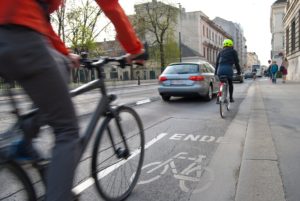 To show that the reliable transportation systems we wish to create are boosting well-being, we need to use multimodal measures that look beyond how many people are moved and how quickly. We also need to show how better transportation impacts quality of life, health, safety, and equity. Leaders in Klamath County, Oregon, have such measures in mind as they think about how to quantify the value of a protected bike path that opened in a corridor of the county seat last year—partners are looking into ways to track how many people use the path. They also plan to use geographic information system mapping to see whether economic vitality and resident health improve along the route the path takes into town.
To show that the reliable transportation systems we wish to create are boosting well-being, we need to use multimodal measures that look beyond how many people are moved and how quickly. We also need to show how better transportation impacts quality of life, health, safety, and equity. Leaders in Klamath County, Oregon, have such measures in mind as they think about how to quantify the value of a protected bike path that opened in a corridor of the county seat last year—partners are looking into ways to track how many people use the path. They also plan to use geographic information system mapping to see whether economic vitality and resident health improve along the route the path takes into town.
A reliable transportation system needs to be built with everyone in mind. People of all ages, abilities, and income levels should be able to make use of the system.
By focusing on reliable and equitable transportation, communities can ensure healthier outcomes for all through reduced pollution, increased physical activity, greater access to jobs and the opportunity for economic stability, and greater emotional well-being.
Emiko Atherton is the director of the National Complete Streets Coalition, a program of Smart Growth America. As the director, Emiko oversees the Coalition’s federal advocacy, communications, research, and technical assistance programs.
Tyler Norris, MDiv, is CEO of Well Being Trust. From 1990-1995, he led Civic Assistance at the National Civic League.



